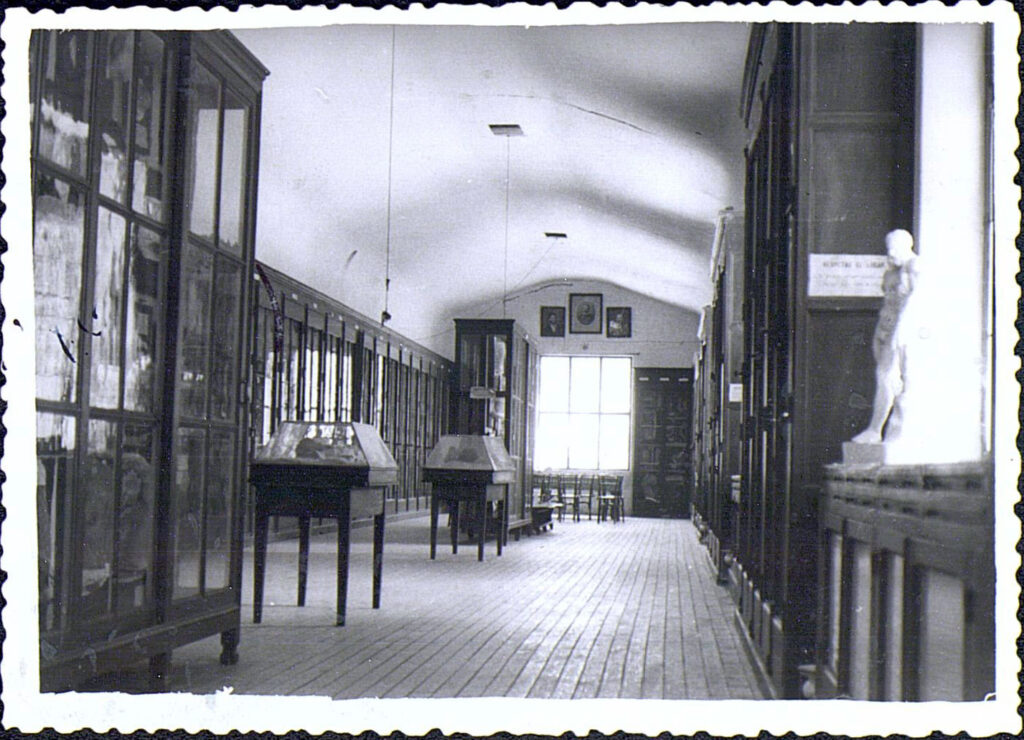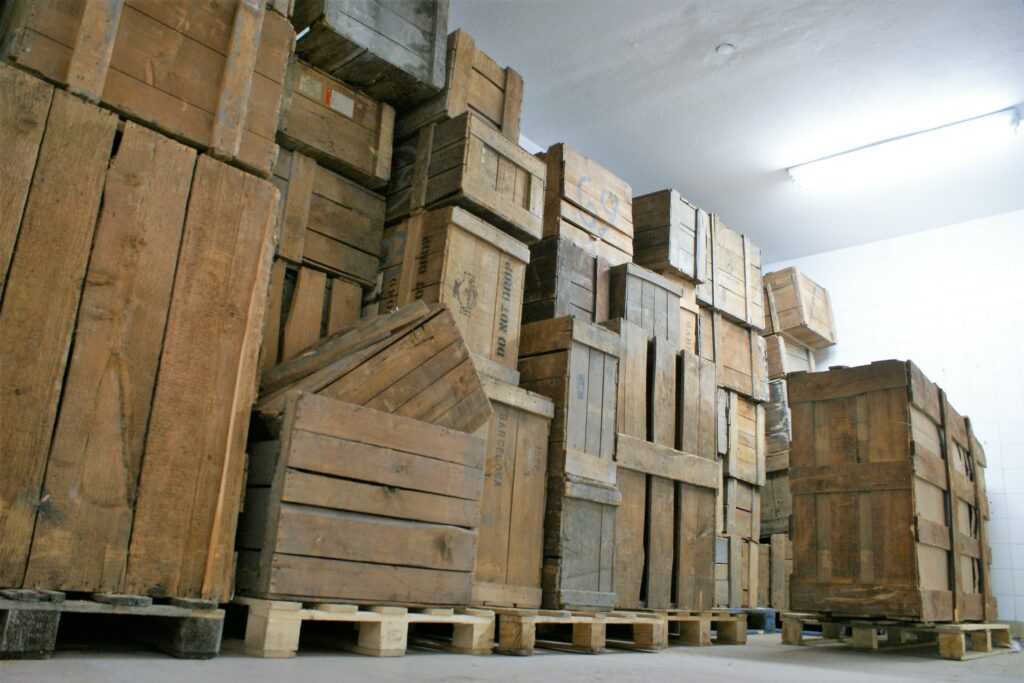Recovery of the museum
The museum once had a collection of about 1,500 figures.
For a series of reasons, many of them fortuitous, there is no precise data before 1940, since much of the documentation disappeared on November 19th, 1936, when an aircraft bomb fell on the Provincial Council building. After the Civil War, the Olavide Museum continued its activity, although more weakened.
Until its closure, it was open to the public on Sundays.
The scant news about the closure of the Olavide Museum came to us from an article in the ABC newspaper, where journalist Pedro Crespo interviewed Rafael López Álvarez, who was directing the packaging of the wax figures in boxes.
Between 1960 and its closure (at the end of 1967 or beginning of 1968), the museum slowly languished and its existence was almost unknown to dermatologists themselves, a period in which almost no reference was made to it. The investigation of this episode in our history became even more complicated when the San Juan de Dios Hospital was demolished and work began on building a public general hospital under the name Ciudad Sanitaria Francisco Franco, currently known as the Gregorio Marañón General University Hospital. Before the demolition, Rafael López Álvaraz, the last wax-sculptor, was in charge of packing the models in more than 200 boxes, which would later be deposited at an unknown location.
There are reports and newspaper features that indicate that the museum once had a collection of about 1,500 figures, although it is not known if all of them were on display. In its last stage, only a selection of 300 works were exhibited.
From the moment the museum closed, the figures, along with their documentation, began a long pilgrimage to the present day. More than 4 different places can be documented where the Provincial Council, today known as the Health Ministry of the Community of Madrid, has been located, so the historical documentation of this collection is lost or dispersed and is extremely difficult to locate.
For more than 40 years these boxes remained practically abandoned, in an annex building of the Francisco Franco Hospital (current Gregorio Marañón Hospital) in the place corresponding to the old Ministry of Health that is adjacent to the old maternity hospital. It was a building in poor condition, which did not meet the appropriate conditions for the conservation of the moulages. With the construction of the new maternity hospital, the figures disappeared again.
At the end of the 80s, a request was made to the Community of Madrid to be able to portray some figures existing in the old San Juan de Dios Hospital, in order to carry out the thesis Contribución al estudio de D. José Eugenio de Olavide y su obra (Contribution to the study of José Eugenio de Olavide and his work), by Jaime José Padrón Lleo and directed by Prof. Joaquín Calap Calatayud. Then, Carlos Gasca Ferré, Head of the Heritage and General Affairs Health Service of Madrid, located the boxes stored in the offices of the Community of Madrid.
But it was not until December 2005 when the real discovery was made: more than 120 wooden boxes were found in the basements of the Niño Jesús Hospital, in some warehouses in poor condition that were going to be demolished.
From that moment on, the Spanish Academy of Dermatology and Venereology (AEDV) was in charge of launching the Rescue and Heritage Project to give new life to the Olavide Museum.
"The location and restoration of the existing figures in the Olavide Museum has been a pending issue for dermatologists during the last 50 years. Many of us did not get to know this museum. Some, now retired, vaguely remember it as the place where they could see wax figures stored inside glass showcases; but we all knew, from what our teachers told us, of the existence of such a wonderful collection of wax models, with inestimable sentimental, historical and economic value."
Luis Conde-Salazar. The Olavide Museum Director



